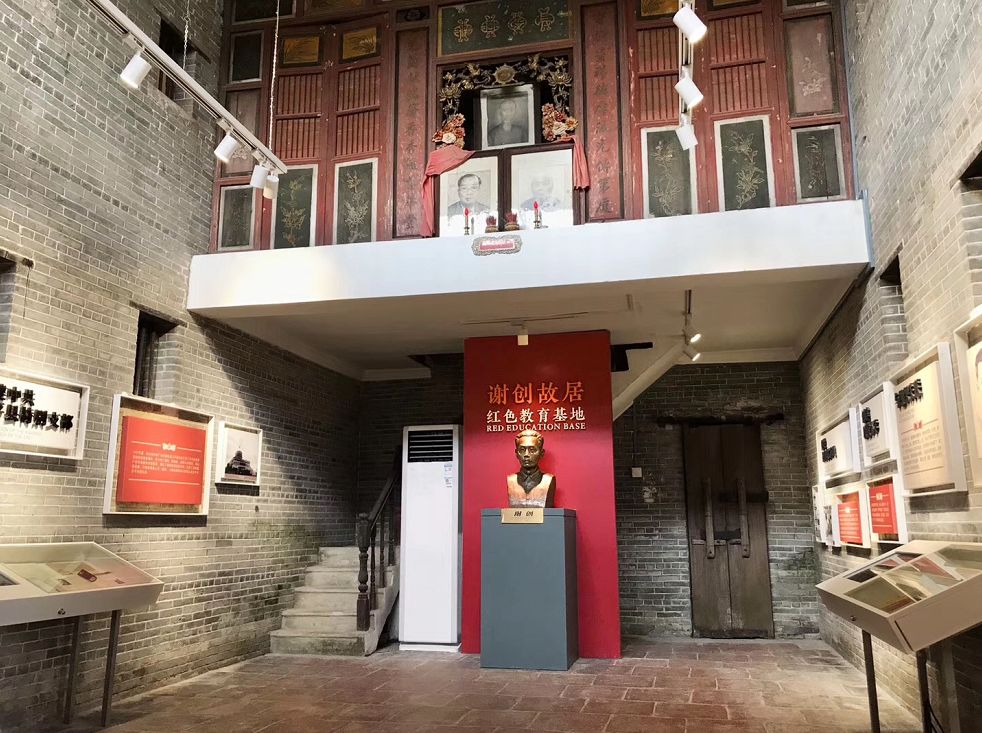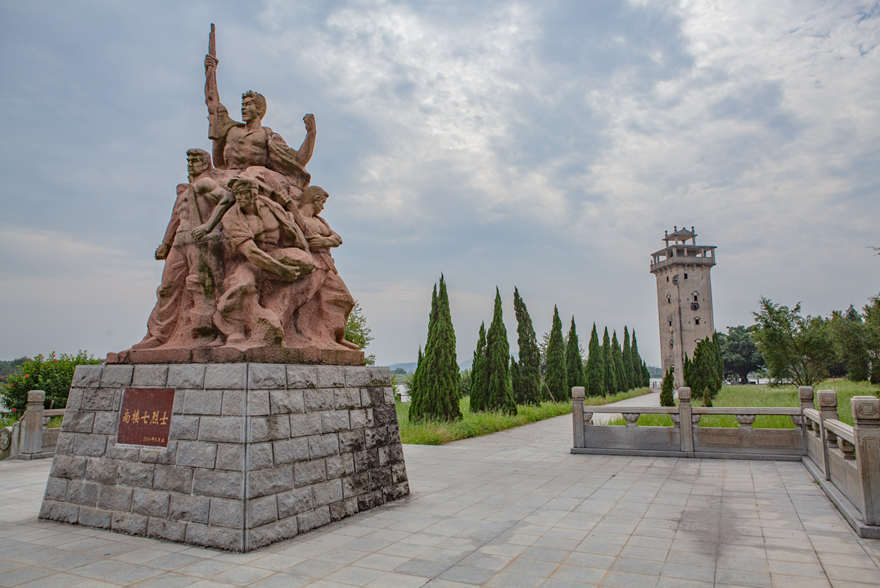Kaiping is the hometown of overseas Chinese and Diaolou. Diaolou is the historical and cultural heritage of overseas Chinese in Kaiping, and it is also a testimony to the patriotism of the people of Kaiping and the vast number of overseas Chinese, and the protection of their homes and homes. Kaiping City has carried out in-depth party history study and education, highlighted local characteristics, created a bright brand, made full use of the red educational resources of Kaiping Diaolou, and carried out the "Classroom under Diaolou" activity, using the Diaolou and its surrounding activities as a "classroom" to develop Kaiping features Study and education of party history.
1. At present, Kaiping City has established more than 20 classrooms under the towers, covering all towns (streets) in the city, realizing one town and one classroom, and becoming an important base for party members and cadres to carry out party history learning and education. Including: Xie Chuang Former Residence Red Education Base in Tangkou Town, Maogang Baoding Village in Baihe Town, Nanlou Memorial Park in Chikan Town, etc. Among them, the former residence of Xie Chuang is located in Yijingqingmin Village, Tangkou Town. It is the home of Xie Chuang, one of the rebuilders of the Kaiping Party of the Chinese Communist Party. It is also the establishment of the "Special Branch of Kaiping County of the Chinese Communist Party" and the first enlarged meeting of the Special Committee of the Central District of the Communist Party of China. Meeting place. Baoding Village, Maogang, Baihe Town, was the place where Zhou Wenyong martyr grew up. The village has preserved the former residence of Zhou Wenyong. The red revolutionary gene has been passed down to this day. Photo by Luo Kaichuan The South Building of Tengjiao Village in Chikan Town is the place where 7 villagers of the Situ family formed a self-defense force to bravely fought against the Japanese army, and the story of weeping ghosts and gods happened. 2. Kaiping City uses its own "classrooms downstairs" to actively promote the deepening of party history learning and education, and cultivate the feelings of love for the party and the country and forge ahead among party members and cadres. Photo by Peng Weizong The Zhou Wenyong and Chen Tiejun Memorial Hall in Baihe Town is an important place for the people to cherish the memory of the martyrs and place their grief. It is also an important classroom for party history learning and education in Kaiping City. Groups of party members, cadres and individuals inside and outside the city come to accept revolutionary traditions. education. Many red revolutionary sites in Kaiping have also become classrooms downstairs in this city. Party members and cadres of government agencies receive lively education on party history. Among them: Kaiping Taxation Bureau organizes the life of party members in the south downstairs and listens to the heroic events that have happened downstairs. The story of fighting against Japanese invaders; Kaiping Court organized party members and cadres to carry out a series of "Party Classes under the Diaolou" at the former residence of Xie Chuang in Tangkou Town. Many party members and cadres from units and organizations in and outside the city also went there. The former residence of Xie Chuang gradually became a red Internet celebrity check-in place; Party members and cadres from Shan Town went to the Bandung Inn to review the glorious history of the underground revolution of the Guangdong Central Column. Chikan Town makes full use of the town’s red resources such as Situ Meitang, Nanlou Seven Heroes, Deng Yifei, Sha Fei, etc., to organize party members, cadres, and party activists to gather downstairs to hold party history special party classes. Many local citizens also participated spontaneously, holding party history recitations, red story sessions, and reading sharing sessions in the classrooms downstairs. Party members and cadres and tourists from foreign organizations also joined together to learn about the story of the hometown of overseas Chinese, visit the revolutionary ruins, and learn. History of the Chinese Communist Party. The classroom downstairs has become a vehicle to relive the revolutionary years, tell the red story well, and inherit the revolutionary spirit. 3. Kaiping City also explored the red genes of the Diaolou through the "Classroom Downstairs", enriched the red story of the Diaolou, and enriched the content and forms of the "Classroom Downstairs". The Diaolou is next to the Kaiping people. Party classes are given below the Diaolou to allow party members and cadres to receive a more local culture and spiritual baptism in the form of "on-site education + party lectures". In the process of learning party history, they can realize their original mission and forge ahead. power. The Kaiping Taxation Bureau used the red resources of the hometown of overseas Chinese to carefully create a model of "one ministry, one preacher", selected 13 young party members, formed a red story preaching group, and invited taxpayer payers to preach the "party class downstairs". Face-to-face inquiries, questions and needs, on-site answers to tax-related questions and difficulties, and integration of party history learning and education with practical work for the masses. Relying on the red resources from the revolutionary ruins of Tongerliang Gongci in Tianlu Mountain, Dasha Town carried out a series of activities related to party history learning and education in the "Classroom under the Diaolou". Baihe Town carried out party lectures by the secretary in the downstairs of Zhendong, where the revolutionary martyr Zhou Wenyong taught himself as a young man. Photo by Yu Weiliang Sanbu sub-district offices and representatives of party members from various villages (communities, residential areas) presented a rich and vivid party history and the history of the development and changes of the hometown of overseas Chinese in the Fengcai Hall of the city's clean government education base. The Kaiping Taxation Bureau of the State Administration of Taxation carried out a series of activities in the "Party Class under the Diaolou" in the former residence of Xie Chuang (Zhongshan Tower), and carried out study and discussion in the form of the "Red Tea House" in the Hometown of Overseas Chinese. Photo by Tan Jianhua According to statistics, since the introduction of party history learning and education, nearly 300 lectures and various forms of educational activities have been carried out in the "classroom under the tower". Party members, cadres and masses of the city have participated in the party history study and education in the "classroom under the tower". There were also party members, cadres, groups and individual tourists from organizations outside the city, totaling more than 10,000 people.










